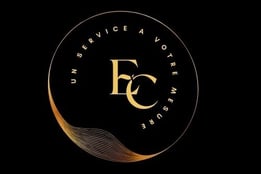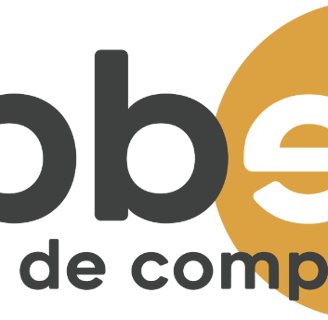Web Marketing Strategy: SEO, Paid Search and LinkedIn to Boost Your Brand
Support in digital strategy: SEO, paid search and LinkedIn in a complete web marketing strategy. Advice, adapted tools (Ahrefs, Semrush, Thot SEO) and examples to maximize your impact and attract qualified leads.
WEBMARKETINGMARKETING
Lydie GOYENETCHE
1/6/20259 min read


SEO web marketing strategy and social networks: which tools?
In the world of web marketing, SEO is at a crossroads: it feeds content strategy, strengthens branding and attracts qualified prospects. But to optimize these results, companies need to choose the right tools, whether it's Ahrefs, Semrush, or Thot SEO, and integrate these practices into a more holistic strategy, including paid search and platforms like LinkedIn.
To go further, an effective digital strategy must also include precise marketing actions. For example, developing a structured marketing plan that combines SEO and paid search is essential to increase the visibility of a website and meet customer needs.
What is the difference between digital marketing, web marketing and content marketing?
These three concepts are often used interchangeably, but they have distinct meanings. Digital marketing encompasses all actions aimed at increasing online visibility, such as SEO, SEA and social media campaigns. Web marketing, on the other hand, focuses more specifically on internet-related levers, such as website optimization or online advertising. As for content marketing, it is about producing engaging content adapted to personas to generate qualified leads.
In this context, it is crucial for an SME or VSE to understand these distinctions to develop a strategy that meets its objectives.
What is the best digital strategy to adopt for a small or medium-sized business?
To discuss the priorities of a digital strategy and avoid common mistakes in web marketing, Camille, the moderator, leads an exchange between five experts:
Lucie, local SEO and digital marketing expert for small businesses,
Marc, consultant specialising in e-merchants,
Sofia, specialist in branding and CSR strategy,
Thomas, SEO manager in a large international company,
Julie, customer experience and conversion rate optimization consultant.
Ahrefs, Semrush and Thot SEO: choosing the right tool for your needs
Camille, the moderator, opens the debate. "Let's start with the choice of tools. Could you explain to us when you would recommend Ahrefs, Semrush or Thot SEO, and why? »
Marc speaks. "For an e-tailer, Ahrefs is unbeatable. Its backlink database is huge and essential for building a netlinking strategy. For example, with a client in fashion, we used Ahrefs to identify where their competitors got their links. This allowed us to build a relevant backlink strategy that boosted its traffic. »
Lucie reacts. "I agree that Ahrefs is powerful, but for my local customers, I often prefer Semrush. It is easier to use and perfect for small businesses that do not have a dedicated SEO team. For example, for a hairdresser in Paris, Semrush helped us identify local keywords like 'best hairdresser Paris 15'. This allowed them to better position themselves without getting lost in technical complexity. »
Sofia intervenes in turn. "It also depends on the objectives. A brand committed to CSR could benefit from Thot SEO, which excels in semantic analysis. I supported an ethical product company and used Thot SEO to structure articles on the theme of 'the importance of consuming locally'. Not only did this attract qualified traffic, but it strengthened their storytelling and positioning as a responsible brand. »
Thomas concludes this first exchange. "For large companies, it's all about coordination. We use Ahrefs to analyze international competitors, Semrush to monitor our multichannel performance, and Thot SEO to optimize very specific campaign-related content. These are three complementary tools according to needs. »
Paid Search: an ally or a threat for SEO consultants?
Paid search, also known as paid search, is often an indispensable lever for companies looking to obtain immediate results. For example, Google Ads allows you to target specific keywords and quickly increase the online visibility of a website. However, it is important to integrate these campaigns into an overall digital marketing strategy to maximize their effectiveness.
For consultants, using paid search can sometimes be perceived as a weakness, especially if their expertise is mainly based on SEO. It is therefore essential to justify the use of this lever, while proving your SEO skills through case studies.
LinkedIn: a strategic lever for consultants and companies
Camille continues. "In this context, LinkedIn seems to be a more suitable alternative for consultants. What do you think? »
Sofia is the first to answer. "LinkedIn is a perfect platform for consultants. You can share insights, interact with your network, and demonstrate your expertise without sounding too commercial. Consultants from large firms such as McKinsey or BCG do this very well: they publish strategic articles, participate in relevant discussions, and thus strengthen their credibility. »
By using LinkedIn as an acquisition tool, companies and consultants can strengthen their branding while humanizing their communication.
Priorities in a digital strategy
Camille opens the discussion: "For a VSE or SME, what should be the priorities in an effective digital strategy?"
Lucie answers first. "The first step is to define your target audience. Many small businesses try to cater to everyone, but this is a mistake. For example, an organic shop that caters specifically to health-conscious families is much more likely to succeed than a company that targets too large a market. Once the audience has been defined, you can work on an online presence strategy that relies on tools such as local SEO and emailing. »
Marc continues: "I would add that digital channels must be chosen carefully. A small business with a small budget can focus on a winning strategy by combining SEO optimization and targeted Google Ads campaigns to generate traffic quickly. This maximizes their click-through rate (CTR) and conversion rate while staying within their budget constraints. »
Julie adds: "And let's not forget the customer experience! A digital strategy doesn't stop at attracting visitors, it must convert them into loyal customers. For example, tools like A/B testing or personalized email campaigns can significantly improve results. »
Tools for a successful digital strategy
Camille refocuses the discussion: "What tools would you recommend to structure an effective digital strategy for a small or medium-sized business?"
Marc begins: "For SEO, Ahrefs and Semrush remain the references. They help identify keyword opportunities, track backlinks, and analyze competitor performance. For a content strategy, I really like to use tools like Thot SEO to refine semantic analysis. »
Julie adds: "To improve the customer experience and increase the conversion rate, tools like Hotjar or Google Optimize are great. They help to understand how visitors interact with the site and test different versions of the pages to maximize results. »
Lucie adds: "For a local business, simple tools like Google My Business and Mailchimp for emailing are often enough. For example, I worked with a very small company that manages a hairdressing salon. With these tools, she was able to improve her visibility and build customer loyalty with local promotional campaigns. »
Sofia intervenes. "A brand committed to CSR could benefit from Thot SEO, which excels in semantic analysis. I supported an ethical product company and used Thot SEO to structure articles on the theme of 'the importance of consuming locally'. Not only did this attract qualified traffic, but it strengthened their storytelling and positioning as a responsible brand. »
Steps to Create an Effective Digital Marketing Strategy
Camille begins: "For a small business or SME, what are the essential steps to create an effective digital strategy?"
Lucie speaks. "The first step is to clearly define your target audience. Too often, VSEs try to address everyone, which dilutes their message. Take the time to analyze your customers' behavior, their specific needs and expectations. This will allow you to personalize your campaigns and attract new customers. »
Marc adds: "Next, it's essential to choose the right digital channels. For example, an e-merchant can benefit from a strategy that mixes online advertising and content marketing. A Google Ads campaign can generate immediate sales, while a good blogging strategy boosts long-term visibility. »
Julie adds: "Another key step is to think about the customer experience from the start. This includes not only a well-designed website, but also personalized email campaigns that strengthen the customer relationship. An example: one of my clients in the wellness industry saw a 30% increase in ROI after integrating automated email sequences for their new subscribers. »
Creating sustainable online visibility: SEO and advertising
Camille continues: "Once the basics have been established, how can a very small business work effectively on creating online visibility?"
Thomas takes over. "SEO optimization is essential. A well-executed SEO strategy allows you to position yourself on strategic keywords. For example, an artisan baker might target phrases like 'organic baker Paris'. With the right tools like Ahrefs or Semrush, they can track their progress and adjust their strategy to improve their rankings. »
Sofia intervenes. "But SEO alone isn't always enough. Online advertising campaigns are a great addition, especially for businesses looking for quick results. I supported a natural cosmetics brand that used Google Ads to launch a new product. This generated leads immediately, while supporting a content marketing strategy on their blog. »
Lucie nuances. "It is also crucial to distribute the budget well between these different levers. A small business can easily get lost if it invests too much in advertising without measuring its ROI. Every campaign should be closely monitored to ensure that it generates a positive return on investment. »
Digital marketing priorities and challenges for VSEs and SMEs
Camille asks: "What are, in your opinion, the main challenges and priorities of a digital marketing strategy for a VSB or SME?"
Sofia responds first. "The main challenge is to build a strong online presence while remaining aligned with the limited resources of a small business. SEO, email campaigns and content marketing must be thought of as an ecosystem where each element supports each other. »
Marc continues: "Another major challenge is the conversion of visitors into customers. This requires constant optimization of web pages, but also a smooth customer experience. For example, clear landing pages with a precise call to action can significantly improve the conversion rate. »
Julie intervenes: "Finally, you have to learn to measure the effectiveness of each action. Too often, small businesses don't use their data optimally. Tools such as Google Analytics allow you to track key indicators such as click-through rate (CTR), conversion rate or the performance of email campaigns. This data is essential to adjust a strategy and avoid common mistakes in web marketing. »
Mistakes to avoid for an effective digital strategy
Camille asks: "What are the most common pitfalls or mistakes in web marketing, and how can you avoid them?"
Lucie speaks. "A classic mistake is to want to be present on all digital channels at the same time. A very small company does not have the means of a multinational. It is better to focus on 2 or 3 effective channels, such as LinkedIn and SEO, and master them well. »
Thomas adds: "Another common mistake is to neglect the analysis phase. Measuring the effectiveness of each action is essential to understanding what is working and what needs to be adjusted. For example, an advertising campaign that generates a lot of clicks but few conversions needs to be redesigned. »
Sofia adds: "Finally, we must avoid underestimating the importance of content marketing. Poorly optimized or irrelevant content will not generate traffic or engagement. I've seen companies succeed in doubling their traffic by rethinking their content strategy around the real needs of their customers. »
Avoid common mistakes in web marketing
Camille continues: "Let's talk about the mistakes that VSEs and SMEs often make in web marketing. What do you advise to avoid them? »
Sofia intervenes. "A common mistake is not measuring the effectiveness of campaigns. An effective digital strategy is based on concrete data. If a company invests in email campaigns or online advertising, it must track metrics such as CTR, open rate, and conversion rate. Without it, they risk spending money without knowing what is actually working. »
Thomas adds: "Another pitfall is ignoring the importance of SEO from the start. I've seen companies launch beautiful sites, but without an SEO strategy. As a result, they do not appear on Google. Let's take the example of an IT services company in the Lyon region: without local keywords and technical optimizations, their site remains invisible to their potential customers. »
Lucie emphasizes an important point: "You also have to avoid spreading yourself too thin on too many digital channels. A very small company does not have the resources of a multinational. It's better to focus on 2 or 3 suitable channels, such as LinkedIn for B2B businesses or Instagram for local businesses, rather than trying to be everywhere. »
The importance of measuring effectiveness
Camille concludes with one last question: "How do you measure the effectiveness of a digital strategy?"
Sofia answers: "It all starts with defining clear KPIs. The click-through rate for your ads, the open rate for your email campaigns, and of course, the conversion rate for your website. These indicators help you know what's working and adjust the strategy accordingly. »
Thomas adds: "You also have to monitor the overall performance of the strategy via dashboards. For example, a tool like Google Analytics gives you an overview of visits, traffic sources, and user behavior on your site. »
A winning strategy for VSEs and SMEs
To succeed, a VSE or SME must adopt a digital strategy adapted to its needs and target audience. By combining SEO, paid campaigns, emailing, and customer experience optimization, every business can maximize its visibility and achieve its goals. But above all, it must avoid common mistakes and measure the effectiveness of each action to continue improving.
Conclusion: towards a strategy aligned with your objectives
This debate highlights the many dimensions of web marketing. The choice betweenAhrefs, Semrush et Thot SEOdepends on the context and objectives. Paid searchoffers immediate visibility, but should be used with discernment, especially for consultants.Finally, LinkedIn is an essential tool for building a lasting reputation and attracting qualified prospects.
By intelligently combining these levers, any company, whether a VSE, e-tailer or multinational, can maximize its impact while remaining aligned with its values and objectives.


EUSKAL CONSEIL
9 rue Iguzki alde
64310 ST PEE SUR NIVELLE
FRANCE
0033782505766
euskalconseil@gmail.com

